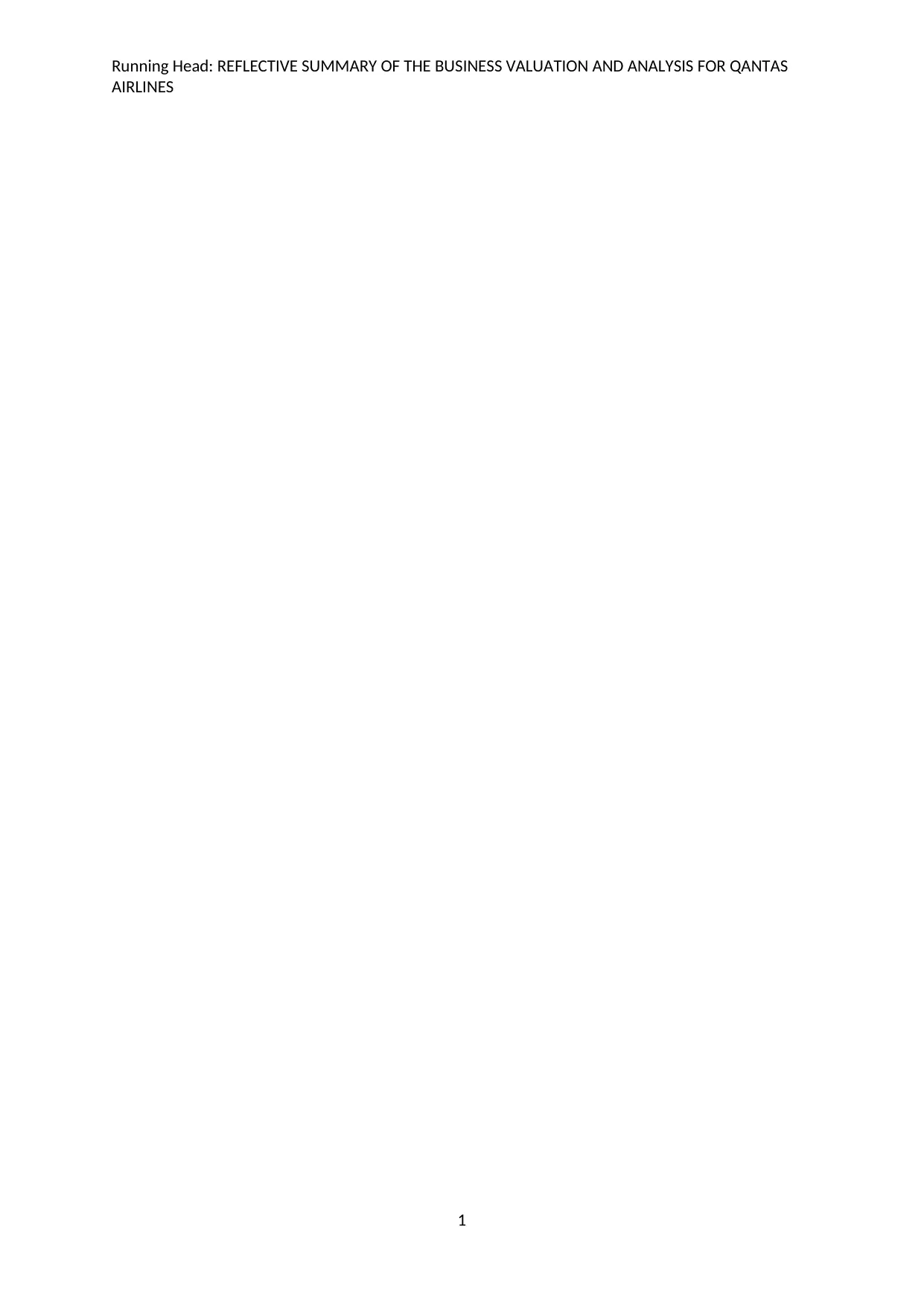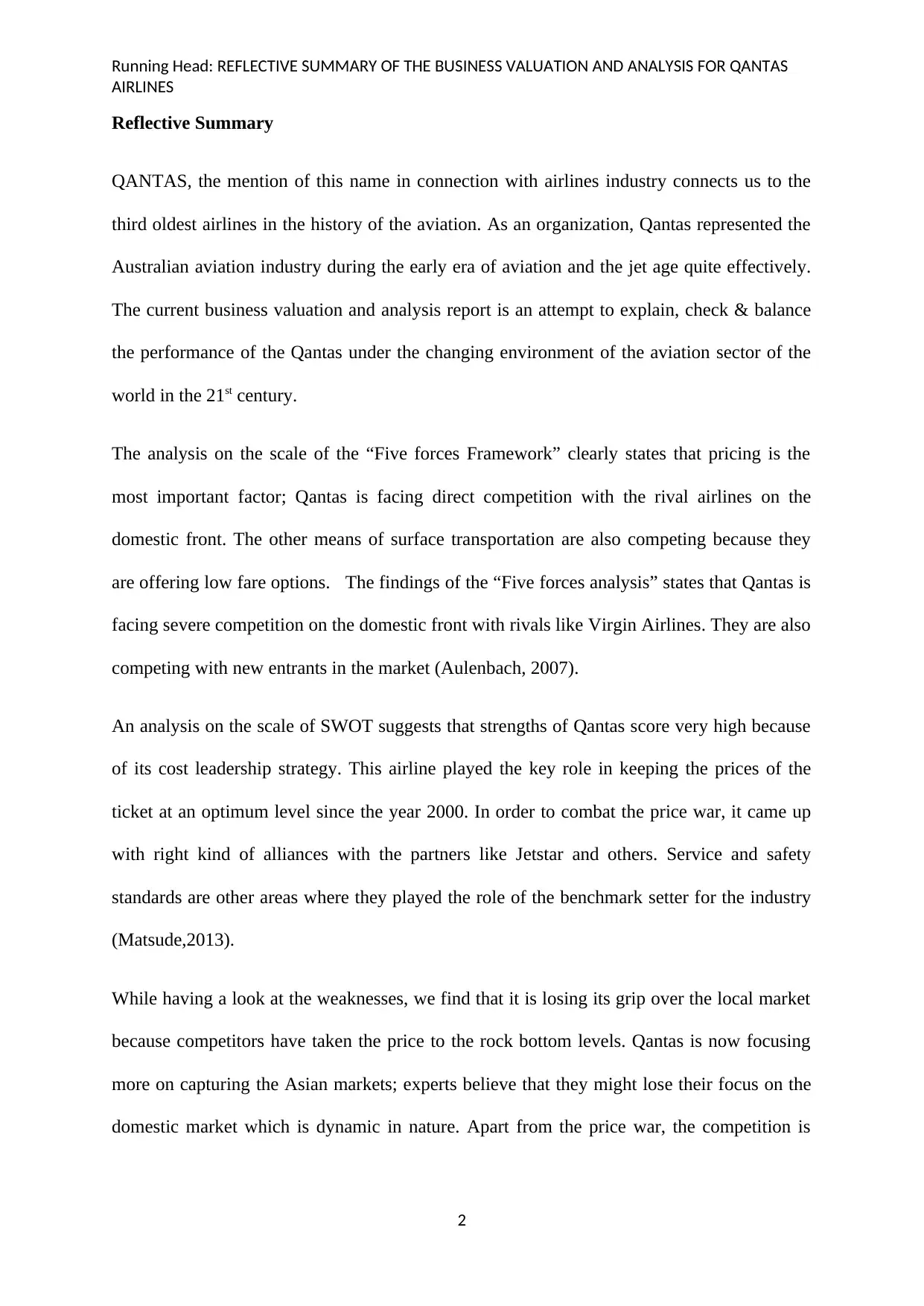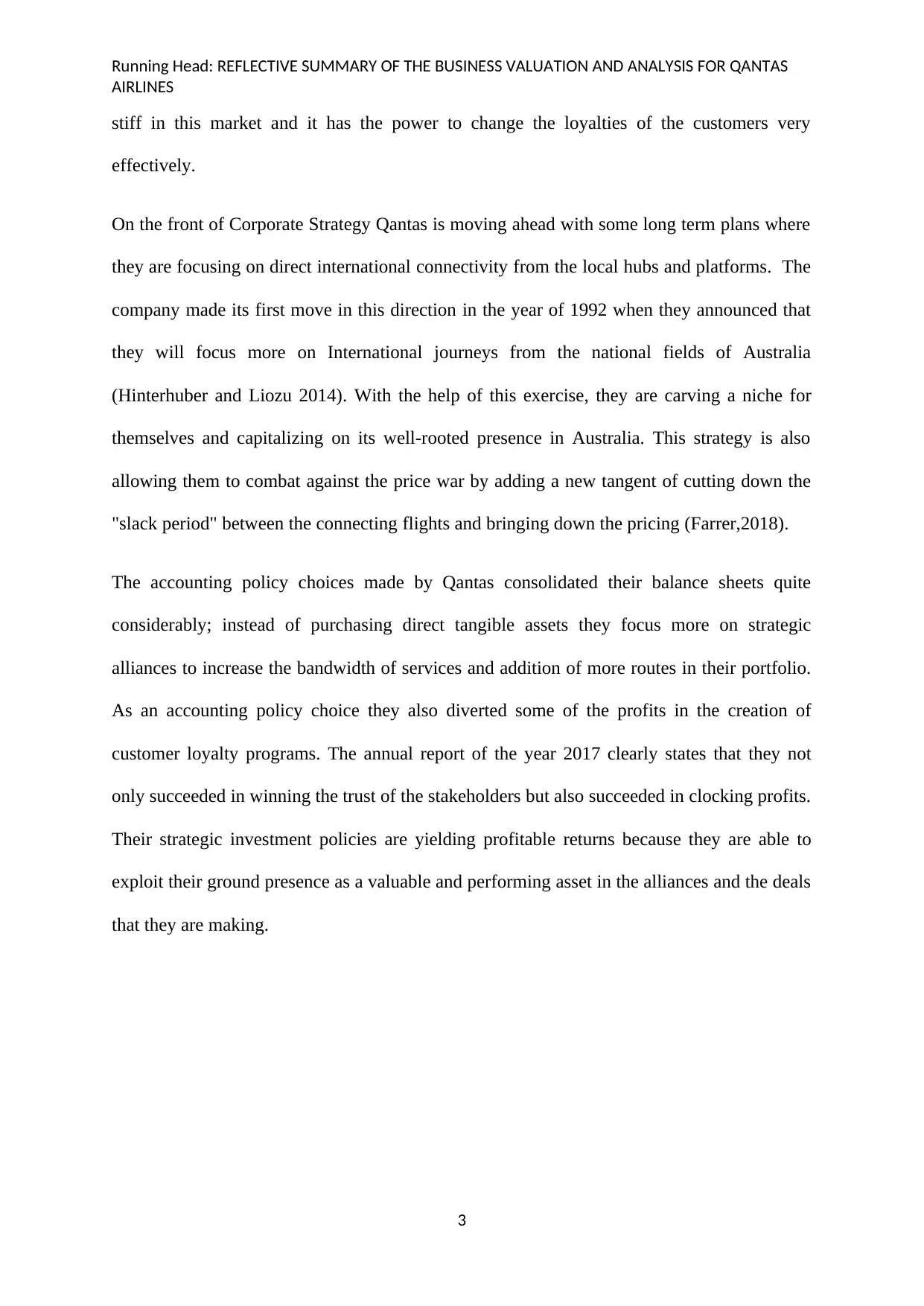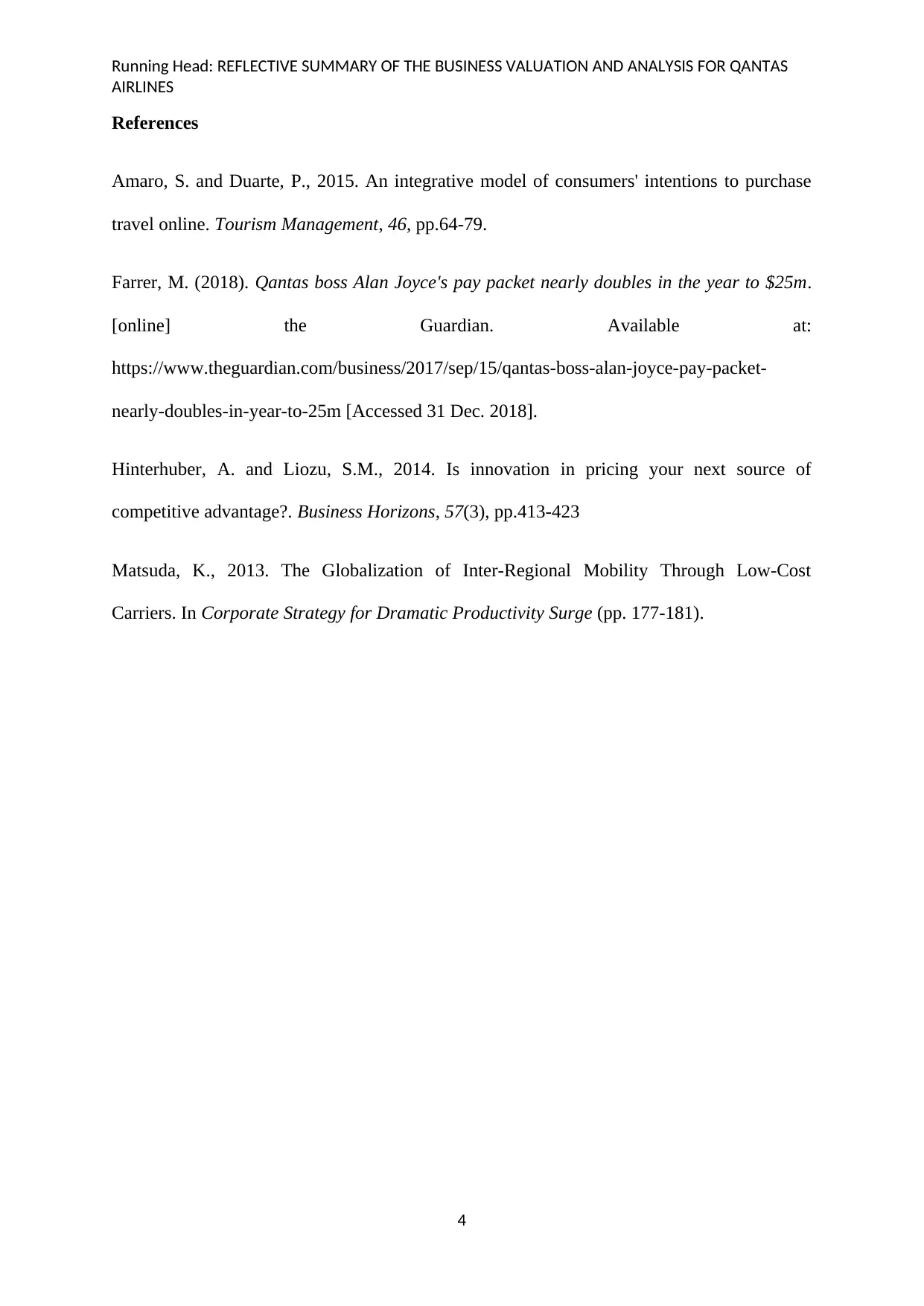Qantas Airlines: Business Valuation, Analysis, and Strategy Report
VerifiedAdded on 2023/04/22
|4
|806
|228
Report
AI Summary
This report provides a reflective summary of the business valuation and analysis conducted on Qantas Airlines. It highlights Qantas's historical significance in the Australian aviation industry and its current performance in the competitive global aviation market. The analysis employs Porter's Five Forces framework, revealing intense competition on the domestic front, particularly regarding pricing, with rivals like Virgin Airlines and alternative transportation options. A SWOT analysis underscores Qantas's strengths in cost leadership, service, and safety standards, while acknowledging weaknesses such as losing market share in the domestic market due to price wars. The report also examines Qantas's corporate strategy, focusing on direct international connectivity and strategic alliances to enhance its service bandwidth and combat pricing pressures. Furthermore, it discusses Qantas's accounting policy choices, including investments in customer loyalty programs and strategic alliances, which have contributed to its profitability and stakeholder trust.
1 out of 4










![[object Object]](/_next/static/media/star-bottom.7253800d.svg)